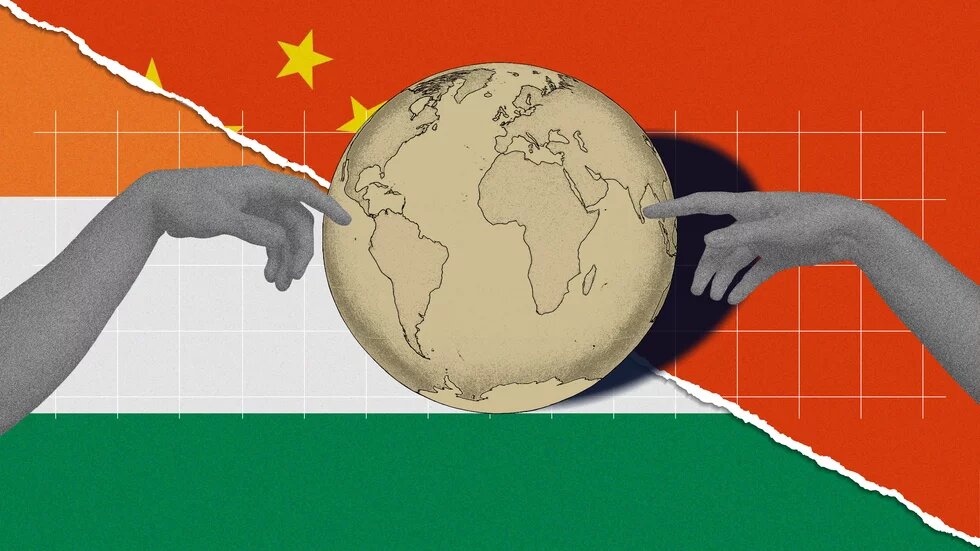Editorial

India and China, as the world’s two most populous and economically significant countries, have increasingly positioned themselves as prominent “leaders” of the (vaguely defined, politically contested and highly diverse) “Global South”. Both invoke historical ties and postcolonial solidarities to appeal to developing countries and signal alignment with their interests. Yet their strategies - and the perceptions they generate among Global South partners - diverge significantly. In their diplomatic language, both countries emphasize multilateralism and international cooperation, but with distinct tones. `, as a democracy, highlights consensus-building and inclusive engagement, projecting itself as a voice for poorer nations in global forums. China, by contrast, often pursues an infrastructure-led diplomatic approach, leveraging economic strength through large-scale investments, but has also begun to place more emphasis on human development.
India’s bid for Global South “leadership” draws on its post-colonial identity and longstanding emphasis on sovereignty and multilateralism. From Nehru’s Non-Aligned Movement to today’s “Vishwabandhu” (Friend to the World) doctrine, India has positioned itself as a representative of nations outside big-power alliances. Its 2023 G20 presidency marked a high point in this strategy, notably with its successful push for African Union membership and a summit agenda focused on development, climate finance, and digital infrastructure. Modi’s claim that India became “the voice of the South” reflects this self-styled leadership — though its limited development financing still limits global influence compared to China.
China, by contrast, wields its economic heft and development track record to deepen its sway across the Global South. Initiatives such as the Belt and Road Initiative (BRI) and the Global Development Initiative (GDI) elicit a mix of optimism and concern from governments in Southeast Asia, Africa, and Latin America. Many welcome better connectivity and technology access, yet concerns about transparency and potential environmental impacts are being raised. Beijing further supplements its influence through platforms like an expanded BRICS, which enhance its convening power. While this delineates the situation of China’s engagement to date, a sharpening US–China rivalry in an increasingly fragmented landscape could push its engagement toward more transactional forms.
From the perspective of many Global South countries, the rise of China - and to a lesser extent India - has provided alternative pathways for engagement beyond traditional Western partners. This diversification offers greater leverage, new economic opportunities, and alternative sources of development financing. However, few Global South nations see themselves as aligned uncritically with any one power. Instead, most pursue pragmatic foreign policies, maximizing the benefits of relationships with China, India, and Western actors alike.
This contest over Global South “leadership” is playing out amid profound shifts in the global order. The Trump administration’s rejection of multilateralism, embrace of unilateralism, and disruption of long-standing alliances have created uncertainty — and a vacuum that both China and India, but also other influential regional powers, will seek to fill. The ongoing geopolitical ruptures have not only undermined the coherence of “the West” but will likely further reconfigure how states in the Global South engage with power and pursue their development and security goals.
Understanding the dynamics between these two rising powers is essential for grasping the evolving geopolitical terrain. China and India coexist in a complex relationship marked by competition, strategic ambiguity, and occasional cooperation. Their differing visions for the global order - and for the role of the Global South within it - make the question of who (if anyone) can legitimately “speak for” the South a deeply political one. This is all the more relevant as China’s own claim to “developing country” status faces increasing international skepticism.
For European policymakers, these developments carry significant implications. As global power dynamics shift, Europe’s engagement with the Global South will require a more nuanced and strategic approach - one that accounts for the interplay of Chinese and Indian ambitions, and avoids simplistic assumptions about leadership or solidarity.
Against this backdrop, this dossier explores the contested roles and shifting perceptions of India and China as potential “leaders” of the Global South. It analyzes their objectives, strategies, and the tensions that arise as they navigate the unfolding geopolitics of the 21st century.